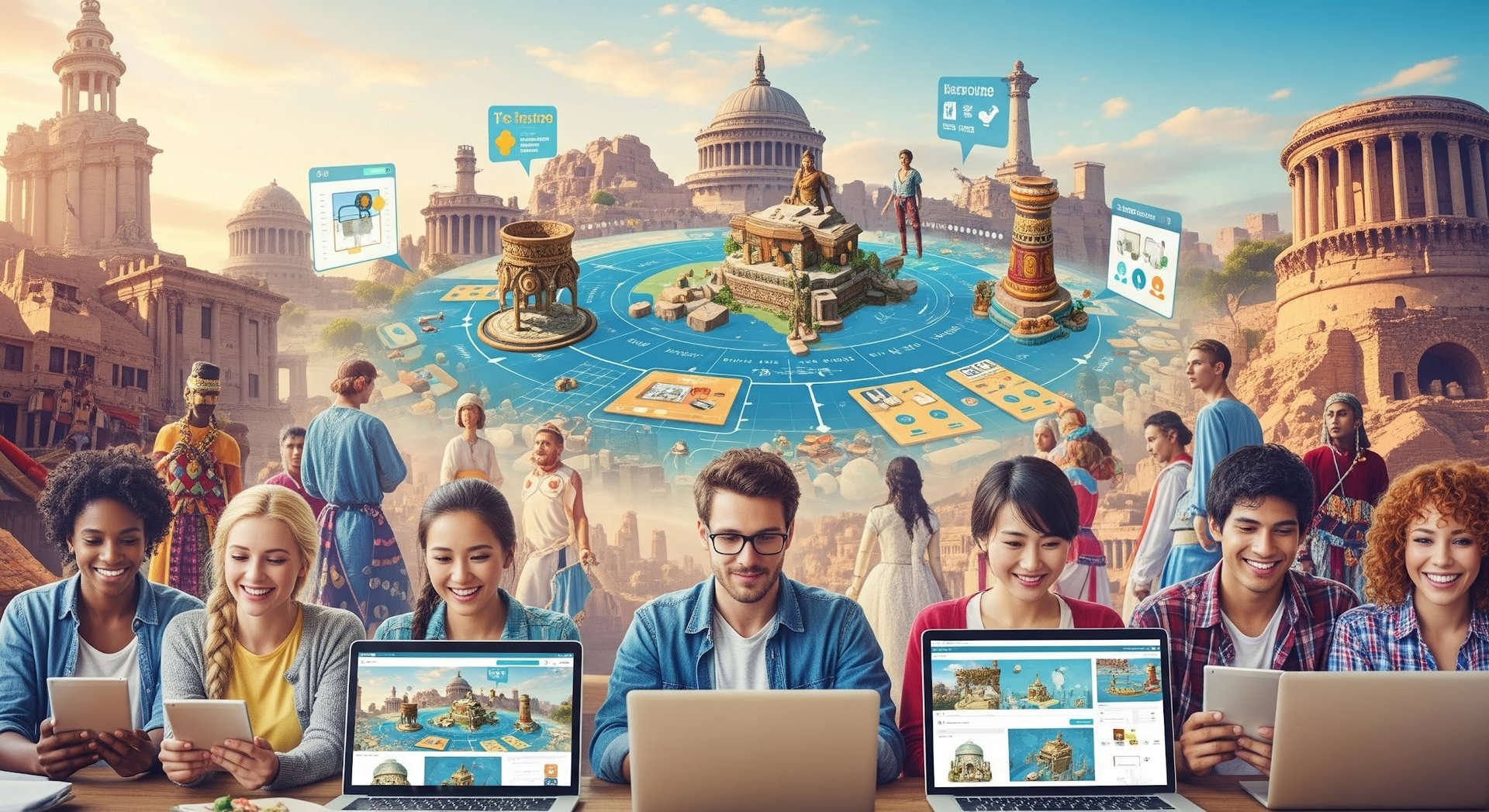
Exploring Ancient Civilizations Through E-Learning: A New Era for History Education
EDUCATION AND TRAINING
3/26/20252 min read
Let’s be honest—history lessons haven’t always been thrilling. Endless textbook pages, fuzzy timelines, and the same three statues over and over. But that’s changing—fast.
Welcome to the future of history education: exploring ancient civilizations through e-learning.
In a world where students expect interactivity, visuals, and real-world connection, digital learning tools are transforming how we understand the past. Whether you’re a teacher planning your next lesson or a curious student ready to time-travel from your tablet, e-learning brings ancient worlds to life like never before.
Let’s dig (pun intended) into how e-learning is reimagining ancient civilizations for today’s classrooms.
Why Teach Ancient Civilizations in 2025?
The ancient world is still shaping our lives today—from democratic systems in Athens to engineering feats in Rome. Teaching these civilizations isn't about memorising dates; it's about understanding the roots of culture, innovation, and identity.
Core reasons to teach ancient civilizations:
Critical Thinking: Analysing how societies rose and fell helps students think deeply about cause and consequence.
Global Awareness: Exploring civilizations like Mesopotamia, Egypt, China, and the Maya fosters cultural understanding.
STEM Connections: From aqueducts to astronomy, ancient tech can be linked to science, engineering, and maths.
Storytelling Power: These are epic stories—kings, queens, conquests, inventions, and mysteries. What’s not to love?
How E-Learning Transforms Ancient History Education
E-learning doesn’t just digitise content—it enhances it. It brings context, connection, and creativity into the mix.
1. Immersive Multimedia
Virtual tours of the Pyramids or Roman forums
Augmented reality to explore ancient ruins from your classroom
Interactive maps and digital timelines that update as you click
2. Gamification for Engagement
Quizzes that feel like mini adventures
Role-playing simulations where students become ancient leaders or traders
Earn points or badges for completing levels in Mesopotamia or Ancient Greece
3. Flexible Learning for All Styles
Audio versions of historical content for auditory learners
Visual timelines and illustrated ebooks for visual learners
Interactive activities and games for kinesthetic learners
4. Real-World Skills
Students practise critical thinking by comparing ancient problems with modern ones
Decision-making games model leadership, diplomacy, and resource management
Group activities foster collaboration across digital platforms
Top Civilizations to Explore Through E-Learning
There’s a whole ancient world to explore—literally. Here are some classroom favourites that shine when brought to life with digital tools:
Ancient Egypt
Mummies, pyramids, gods galore—and great for decoding hieroglyphs online!Ancient Greece
Birthplace of democracy, the Olympics, and a truckload of mythology.Ancient Rome
Engineering wonders, gladiator arenas, and a government that inspires modern systems.Ancient China
Dynasties, inventions (hello, compass and paper!), and the Great Wall—all clickable.Mesoamerican Civilizations (Maya, Aztec, Inca)
Astronomy, architecture, and rich storytelling traditions that expand global awareness.Mesopotamia
Often the first stop—where writing, cities, and law codes began.
Why It Works for Students in 2025
Students today are digital natives. E-learning speaks their language—interactive, fast-paced, visual, and learner-driven. It helps:
Build curiosity through discovery-based learning
Increase retention with active participation
Support accessibility for students with diverse needs and learning paces
Encourage independent exploration with self-guided modules
Teachers, This Is a Game-Changer
Planning lessons on exploring ancient civilizations through e-learning can feel like having a co-teacher—one that brings visual magic, instant feedback, and curriculum alignment to your classroom.
Here’s what teachers love:
Ready-made presentations and quizzes
Curriculum-linked content aligned with national standards
No more printing handouts—everything’s online!
Students stay engaged and actually want to learn history
Learning in the 21st Century Is About Experience
Gone are the days when history meant just remembering “when.” Now, it’s about understanding why, how, and what it means for us today.
By exploring ancient civilizations through e-learning, we don’t just study the past—we experience it. Students can walk through the streets of Athens, explore the Nile Delta, or decode an ancient script—all from their tablet or laptop.
And that’s not just fun. It’s unforgettable.
